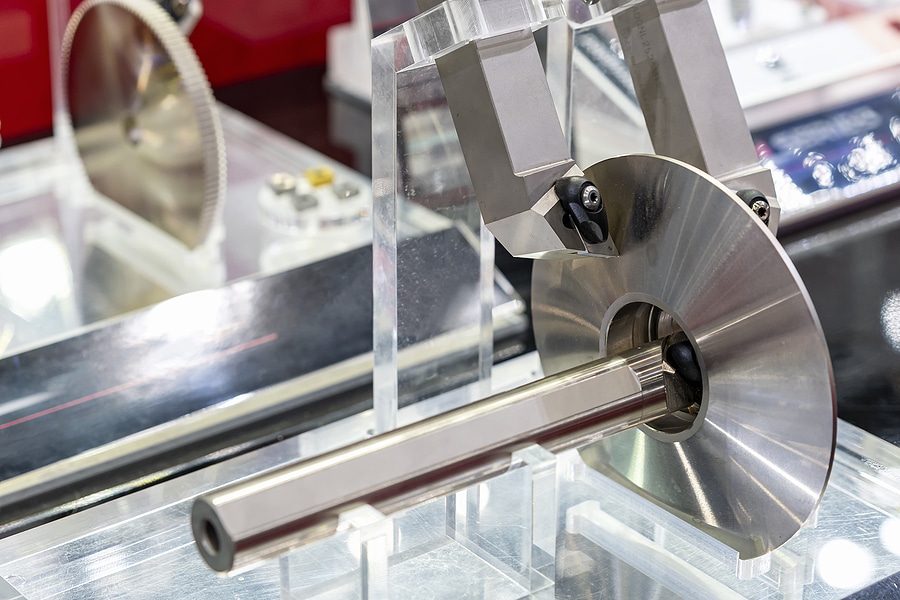In the world of manufacturing, durability isn’t just a buzzword—it’s a requirement. Components in industrial applications face extreme conditions, from high-pressure environments to continuous mechanical stress. This is where broaching comes into play.

As a precision machining process, industrial broaching not only shapes materials with remarkable accuracy but also enhances the durability of components, ensuring they stand the test of time.
In this blog, we’ll take a look at how broaching improves component durability, why it’s a preferred choice in many industries, and how companies like C. Thorrez Industries, Inc. leverage this process to deliver high-quality, long-lasting parts.
What Is Broaching?
At its core, broaching is a machining process that uses a toothed tool, known as a broach, to remove material in a consistent, precise manner. The broach is either pulled or pushed over the workpiece, cutting material progressively with each tooth.
This creates highly accurate shapes, including keyways, splines, holes, and complex profiles that would be difficult or inefficient to achieve with other machining methods.
Types of Industrial Broaching Include
- Internal Broaching: Used to create internal shapes like keyways, hexagons, or splines.
- External Broaching: Used on the outer surfaces of a workpiece, such as gears or flat surfaces.
- Surface Broaching: Involves machining large, flat surfaces with uniform precision.
While broaching is prized for its speed and precision, one of its less discussed—yet critical—benefits is its contribution to component durability.
How Broaching Enhances Durability in Industrial Components
One of the key factors affecting the durability of industrial components is the surface finish. A smooth, uniform finish reduces the risk of stress concentrations, which can lead to cracks, fatigue, or premature wear.
Industrial broaching excels in delivering exceptionally smooth surface finishes. Because each tooth on the broach removes only a small amount of material, the process minimizes tool marks, inconsistencies, and imperfections. The result? Components that are less prone to wear and capable of withstanding repeated stress over time.
Improved Structural Integrity
The precision of broaching ensures that material is removed evenly, reducing the risk of introducing micro-fractures or stress risers that could compromise the component’s integrity. This is particularly important in industries like aerospace, automotive, and heavy machinery, where even minor structural weaknesses can lead to catastrophic failures.
Broached components maintain their structural integrity better than parts produced by less precise machining methods. This directly translates to improved durability, especially in high-load or high-impact environments.
Enhanced Fit and Alignment
Proper alignment and fit are essential for components that interact with other parts in an assembly. Misaligned or poorly fitting components can create uneven stress distribution, leading to premature wear or failure.
Broaching allows for tight tolerances and precise geometries, ensuring that each part fits perfectly within its designated assembly. This reduces unnecessary friction, minimizes vibration, and ultimately extends the lifespan of both the broached component and the system it’s part of.
Strengthened Surface Hardness (When Combined with Heat Treatment)
While broaching itself doesn’t harden materials, the process can be effectively combined with post-broaching heat treatments to enhance surface hardness. This combination is often used in gear manufacturing, where broached teeth are later hardened to resist wear in demanding applications.
The accuracy of the broaching process ensures that heat treatment can be applied uniformly, further improving the durability of the final product.
Reduced Residual Stress
Certain machining methods can leave residual stresses within a component, which may lead to warping or stress corrosion over time. Broaching minimizes this risk because of its controlled cutting action and gradual material removal.
By reducing residual stress, industrial broaching helps maintain the component’s dimensional stability and mechanical strength, even in challenging operating conditions.
Advantages of Industrial Broaching Beyond Durability
While broaching durability is a major benefit, the process offers several additional advantages:
- Efficiency: Broaching is fast, making it ideal for high-volume production.
- Versatility: Suitable for a wide range of materials, from soft metals to hardened steels.
- Cost-Effective: High material removal rates and reduced need for secondary finishing lower production costs.
- Consistency: Delivers uniform results, even across large production runs.
Choosing the Right Partner for Industrial Broaching
To fully leverage the durability benefits of broaching, it’s essential to work with a machining partner that has the expertise, equipment, and quality control processes needed for precision manufacturing.
At C. Thorrez Industries, Inc., we specialize in industrial broaching that prioritizes both precision and durability. With over 100 years of machining experience, our skilled team uses state-of-the-art broaching technology to deliver components that meet the highest quality and performance standards.
Ready to Improve Your Component Durability?
If you want to enhance your industrial components’ durability and performance, C. Thorrez Industries, Inc. is here to help. Our industrial broaching services are designed to deliver precision, efficiency, and long-lasting results for a wide range of applications.
Visit C. Thorrez Industries, Inc. to get started. Contact us today to learn how our expertise can support your next project. Let’s build components that last.

